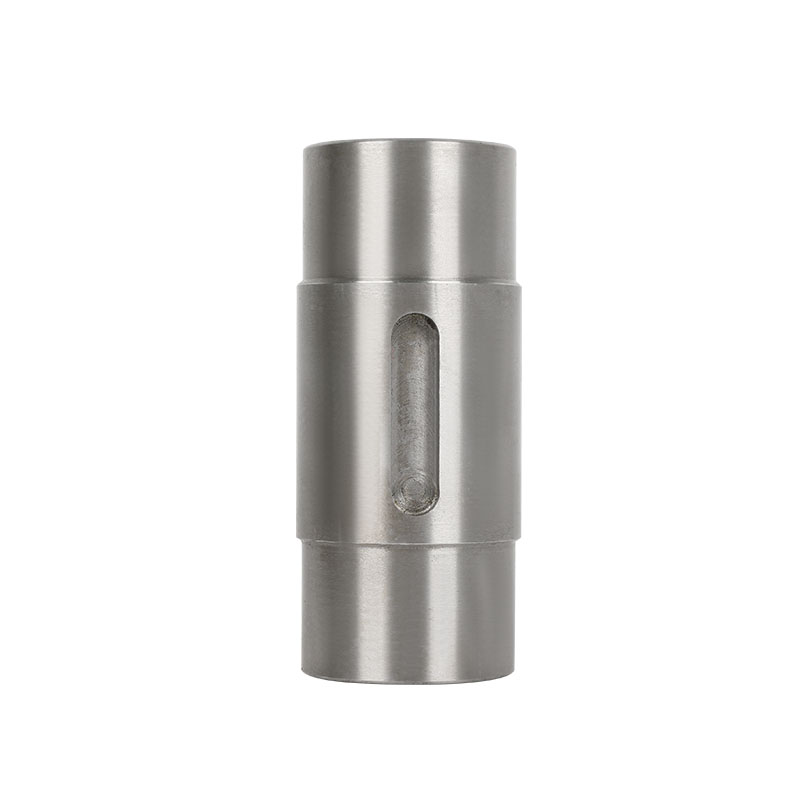The wear resistance and corrosion resistance of worm gear reducer accessories are key performance indicators, which directly affect the service life and operational reliability of the equipment. The following is a detailed analysis of the specific performance of these performances from the aspects of material properties, design structure and actual application scenarios:
Performance of wear resistance
Material hardness and surface treatment
High hardness materials: Worm gear reducer accessories usually use high hardness materials (such as alloy steel, stainless steel or cemented carbide) to resist friction and wear. For example, components such as gear shafts and bearing seats need to withstand greater contact pressure, so the use of materials with higher hardness can effectively reduce wear.
Surface treatment technology: The wear resistance of the accessory surface can be significantly improved through surface hardening treatment (such as carburizing, nitriding or chrome plating). These treatments can enhance local wear resistance without increasing the overall weight.
The role of the lubrication system
Reducing dry friction: A good lubrication system can reduce direct contact between metal parts, thereby reducing wear. Lubricating oil or grease plays a key role in worm reducers, especially under high-speed operation or heavy load conditions.
Extended service life: By regularly changing the lubricant or optimizing the lubricant formula, friction losses can be further reduced and the service life of the accessories can be extended.
Design optimization
Reasonable clearance design: During the assembly process, ensuring the appropriate clearance between the components can not only ensure smooth operation but also reduce unnecessary friction.

Rolling contact instead of sliding contact: In some key parts (such as bearings), the use of rolling contact instead of sliding contact can significantly reduce the wear rate.
Corrosion resistance performance
Material selection
Stainless steel and alloy materials: For accessories that need to be exposed to humid or corrosive environments for a long time, stainless steel (such as 304 or 316 stainless steel) or other corrosion-resistant alloy materials (such as nickel-based alloys) are usually selected. These materials can effectively resist the erosion of acids, alkalis and salts.
Plastics and composite materials: In some light-load or non-metallic applications, more corrosion-resistant engineering plastics (such as PTFE or PEEK) can be used as alternative materials.
Coating protection
Anti-corrosion coating: Applying an anti-corrosion coating (such as epoxy resin, polyurethane or fluorocarbon coating) on the surface of ordinary steel can form a physical barrier to isolate external corrosive media.
Electroplating: Through electroplating processes such as zinc plating, nickel plating or chrome plating, a dense protective layer can be generated on the metal surface to improve corrosion resistance.
Sealing design
Prevent external intrusion: By optimizing the design of seals (such as O-rings, labyrinth seals or stuffing box seals), moisture, dust and other corrosive substances can be effectively prevented from entering the worm reducer.
Internal protection: Adding rust inhibitors or antioxidants to the lubricating oil can further delay the corrosion process of metal parts.
Performance in actual application scenarios
Industrial equipment
In chemical plants or sewage treatment plants, worm reducer accessories need to be exposed to acid and alkali solutions or salt spray environments for a long time, so they must have excellent corrosion resistance.
For high-temperature and high-pressure industrial equipment, accessories must also meet the requirements of wear resistance and thermal stability.
Transportation
In the automotive, shipbuilding or aviation fields, worm reducer accessories may face multiple challenges such as extreme temperature changes, vibration shock and moisture invasion. Therefore, it is crucial to choose high-strength and corrosion-resistant materials.
Construction machinery
Equipment on construction sites is often in a dusty environment, which not only accelerates the wear of accessories, but may also cause corrosion problems. Therefore, reasonable seal design and regular maintenance are particularly important.
The wear resistance and corrosion resistance of worm reducer accessories are mainly reflected in material selection, surface treatment, lubrication system and design optimization. By selecting high-quality materials, adopting advanced manufacturing processes and implementing scientific maintenance strategies, the comprehensive performance of accessories can be significantly improved, their service life can be extended and the safe and reliable operation of equipment can be ensured. This comprehensive approach not only helps to meet the needs of different industries, but also promotes the continuous advancement of worm reducer technology.

 English
English русский
русский bahasa Indonesia
bahasa Indonesia
